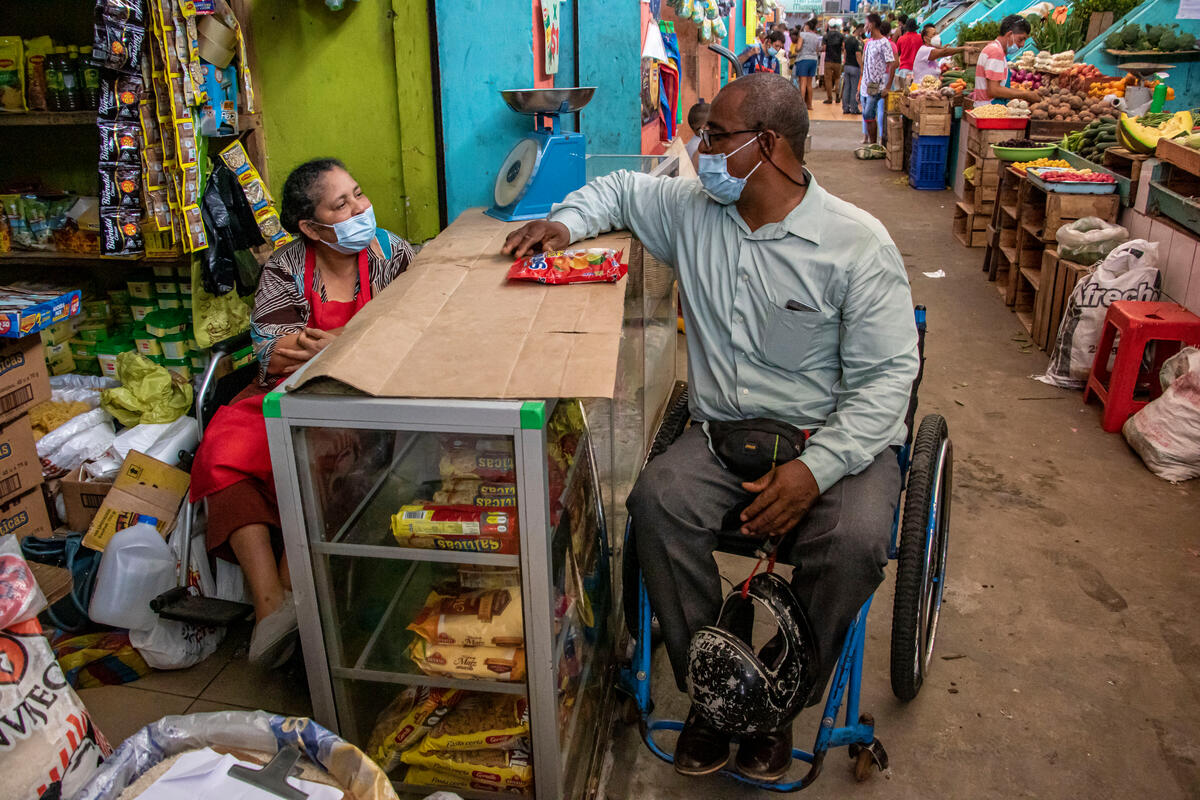Lancet article calls for changes in health care practice for conflict-afflicted
Lancet article calls for changes in health care practice for conflict-afflicted

GENEVA, January 22 (UNHCR) - An article in The Lancet medical journal, co-authored by a UNHCR expert, says health care for people in conflict settings needs to be updated. It calls for changes in four key areas: delivery of health services; treatment of chronic diseases; development of health services in urban areas; and surveillance, measurement and monitoring.
The report authors, led by Paul Spiegel, chief of UNHCR's Public Health and HIV Section, argue that governments, UN agencies and international organizations have been slow to adapt to changes in the operating environments in which they help the conflict-affected, including refugees and internally displaced people.
While acknowledging that substantial progress has been made in responding to the health-care needs of conflict-affected populations in recent decades, they note that the provision of such care has been compromised by shrinkage of the humanitarian space - the areas in which civilians can seek shelter and aid workers provide assistance in safety.
The article in the authoritative British journal says health care in conflict settings is still based on a model developed during the 1970s and 1980s, the last decades of the Cold War, when direct armed clashes between rival states were more common and "conflict was usually synonymous with overcrowded refugee camps sheltering young populations from developing countries."
But the "old paradigms for developing countries with large, camp-based refugee populations with infectious diseases and malnutrition do not address the complexity of present and future conflicts," the report notes.
Today, "most contemporary wars are of protracted duration, intrastate, fought by irregular armed groups and fuelled by economic opportunities and ethnic rivalry. Direct armed clashes are often infrequent, but violence against civilians, including rape, is pervasive. This violence takes place against a backdrop of increasing urbanization and ageing populations," says the article.
Moreover, intrastate conflicts have swelled the number of internally displaced people, as refugee populations have gradually decreased. More than half of the refugees of concern to UNHCR live in urban areas, where providing health care is often complex.
Health system issues are becoming of great importance. They include health financing in protracted crises; barriers to access because of user fees; and the need to integrate services within the formal health system, partly to prevent inequity between beneficiaries and host populations when both have similar needs and vulnerabilities.
Meanwhile, non-infectious chronic diseases are increasingly prominent in conflict settings. This pattern will probably continue as populations age further and incomes increase. And evidence from conflicts and natural disasters shows that much excess morbidity and mortality results from the exacerbation of non-infectious diseases such as hypertension, diabetes and cancer.
These developments, and others, "are profoundly changing the demographics and disease burden of conflict-affected populations," The Lancet article says, while calling for new health-care priorities and recommendations to respond appropriately to future conflicts.
To assist with the orientation of future health strategies, policies and interventions, the report authors propose a matrix of three types of settings (camp-like, urban and rural-dispersed) and two income and life-expectancy categories (low and medium to high). Within this framework they propose changes in the four key areas mentioned above.
Spiegel and his colleagues say new strategies are needed to deliver health services to dispersed, intermittently accessible populations in low-income settings with a continuing high burden of infectious diseases and neonatal disorders; chronic diseases should be addressed more systematically in all conflict settings, irrespective of income and life expectancy; creative approaches to ensure adequate health coverage and access for conflict-affected people living in urban areas should be developed; and crucial challenges in measurement and surveillance need to be addressed. The authors include related key recommendations.









